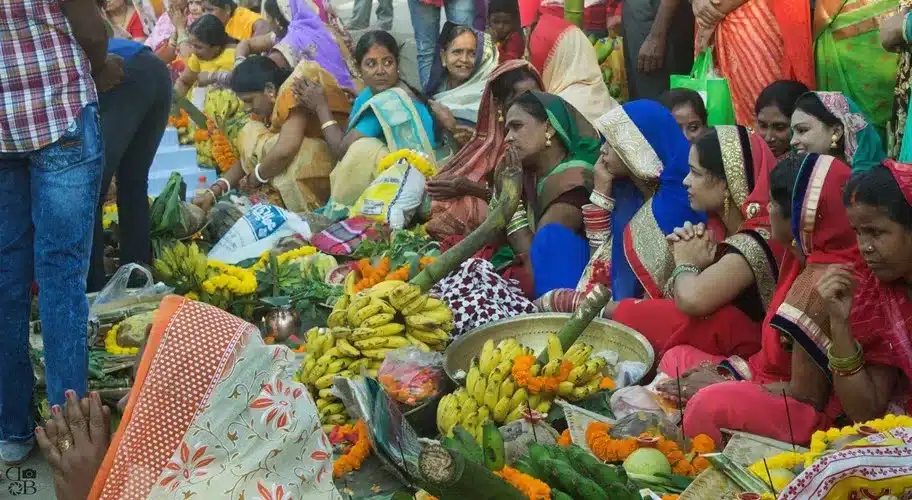Chhath Puja and its significance

Devotees waiting with Prasada for offerings | Source: Debavasya – Own work, CC BY-SA 4.0
Chhath is an ancient Hindu Vedic festival historically native to the Indian subcontinent, more specifically, the Indian states of Bihar, eastern Uttar Pradesh and Jharkhand, and the southern parts of Nepal. During the festival, devotees pray to the Sun. Simultaneously, people observer rigorous fast.
Chhathi Maiya, the mother goddess, and Sun’s sister is worshipped as the Goddess of the festival. It is celebrated six days after Diwali, on the sixth day of the lunar month of Karthika (October–November) in the Hindu calendar Vikram Samvat. The rituals are observed over four days. They include holy bathing, fasting, and abstaining from drinking water, standing in water, and offering prasad (prayer offerings) and arghya to the setting and rising sun. Some devotees also perform a prostration march as they head for the riverbanks.
Rituals
The festival prolongs for four days. On the first day, the devotee has their first meal after taking bath, cleaning the house, and dedicating the food and meal to the god. It is also considered as a process to prepare the devotee for four days of ritual. On the second day, the devotees do not drink even a single drop of water. In the evening, they can eat gur ki kheer (Kheer made up of jaggery) called Rasiaav, fruits, and chapati. The second day is called Lohanda.
On the third day of Chhath puja, an arghya is offered to the Sun God on the Kartik Shukla Shashthi. On this day, prayer is made in the evening, while the sun is setting on the horizon. The family members decorate the bamboo basket with fruits, thekua and rice laddus. Prayer is done on either bank of the river or pond. At the time of arghya, water and milk are offered to Sun God and the Chhathi Maiya.
On the fourth and final day of Chhath puja in the morning. Arghya is offered to the Sun God. On this day, before sunrise, the devotees have to go to the riverbank to offer an arghya to the rising sun. After this, the protection of the child and the happiness of the entire family is sought from Chhatti maiyya for peace. After worship, devotees drink sharbat and raw milk and eat a little prasad in order to break one’s fast which is called Paran or Parana.
Greetings
The President of India, Shri Ram Nath Kovind has sent his greetings to fellow citizens on the eve of Chhath Puja.
In a message, the President has said, “On the occasion of Chhath Puja, I extend my warm greetings and best wishes to all our fellow citizens living in India and abroad.
Chhath Puja is one of the oldest festivals to be celebrated in the country. Its significance lies in offering ‘Arghya’ to the setting Sun. Devotees, after observing rigorous fast during the day, take a holy bath in the waters of rivers and ponds in the culmination of the festival. This festival is a unique expression of relations we share with Sun God and nature.
May this festival strengthen our eternal relationship with nature that help us to protect our environment”.
Observer Voice is the one stop site for National, International news, Sports, Editor’s Choice, Art/culture contents, Quotes and much more. We also cover historical contents. Historical contents includes World History, Indian History, and what happened today. The website also covers Entertainment across the India and World.

